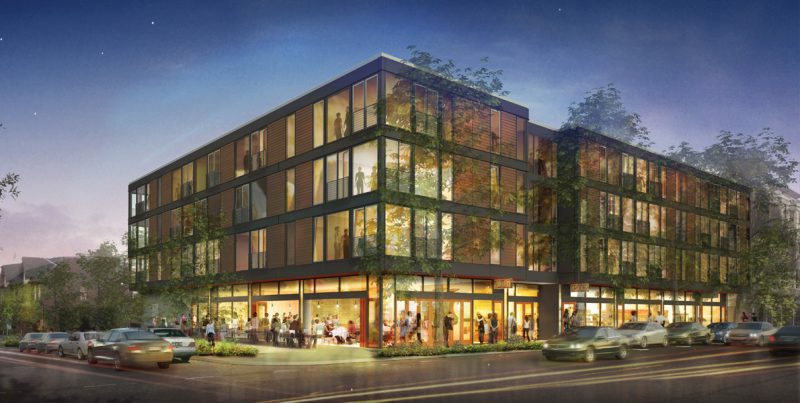In the apartment investment world we often view retail from the perspective of how close important retailers are to our tenants. “Where is the nearest grocery store, drycleaner and gym?” are questions frequently asked. Although these considerations are important, a deeper analysis of retail is warranted – one that explores retail strategy and its application in apartment investment analysis.
It’s not surprising that heretofore the analysis I discuss below may not seem of much import. In regions like the Pacific Northwest, and in cities like Seattle without dense and mature urban centers, rental housing was mostly of the garden-court variety. As a result, investors often looked at apartment investments more individually, separate from direct interaction with other asset classes, and viewed other uses as a tangential feature of a particular location, versus a model from which to glean insights.
With densification of our cities – and more competition amongst apartments (now often separated by lot lines versus miles from one another), I argue for a more holistic approach and one increasingly based on an ecosystem viewpoint towards demand and competitive differentiation. In the face of competition, competitors more closely located to one another and the need to overcome commoditization, retail strategy has commensurately matured and provides some useful lessons to the prescient apartment investors.
Branding
When we think branding in the context of commercial real estate, we often think of retailers. Retailers use branding to create identity, establish distinctiveness and preserve loyalty. Branding is borne out of competition and in the context of real estate is intrinsically tied to time.
Time versus Branding – Retailers don’t get much of our time. We are in a restaurant for maybe an hour and in other retailers for even shorter periods of time.
Furthermore, in the retail world choices are abundant. Accordingly, most often the emphasis placed on branding is inversely proportional to the time to spend in an establishment. If you only have a short time to gain one’s attention and loyalty, you better make an impact!
The continuum of time spent vs. branding is generally as follows:

In the restaurant / retail world, branding is both apparent and universal. Going along the continuum, hotel chains have made great strides in creating branding and tiers of branding. Think St. Regis versus aLoft and The Ritz-Carlton versus. Marriott. Although this paradigm is rather new in the apartment world, just in the last few years AvalonBay embarked on a branding effort, creating three distinct brands for their apartment offerings: Avalon, AVA and Eaves (Eaves is not yet in our marketplace).
Branding is a way to create distinctiveness and better compete in an increasingly crowded marketplace. I believe we will continue to see this phenomenon across asset classes. Office is next, and don’t think for a minute that in the current ‘talent-war’ Facebook, Google, et al. are not responding to this trend.
Branding as Identity – There is seldom greater emphasis on identity than we find in the retail world, it is inescapable. Whether arriving in a BMW, donning a Gucci suit or pulling up a sleeve to expose a Cartier watch, retail branding is meant to connote quality, yet intrinsically speaks to how we express our identity.
They arrive carless ala Uber, Lyft or Car2Go. Hoodies are the fashion statement du jour. Rubberized Fitbits suffice as wrist fashion. Welcome to Gen Y – your renter. In a generation of seemingly perennial non-homeownership and with a bent towards dense urban living (or at least renting), where you rent is a testament to you identity.
Does you have a recycling program? What coffee shop is downstairs? Good luck getting a second date if you bring her back to your apartment building with a Subway franchise in your lobby. Where is Tom Douglas when you need him?
Examples of well-branded apartments are emerging, yet I will exhibit one favorite example. 19th & Mercer Apartments, located in a quaint neighborhood not particularly defined by geography or resident, is a case study in creating branding for an apartment, and in this case using retail to do so. (Yes, I know many of you are thinking Via6, which I reserve for another topic I will cover in Part 3 of this series.)

In this project the retailers are local, the concepts are “neighborhood-ie” and authentic and the offerings are purposeful. You can’t help but translate this all to the brand of the apartment and the identity its residents wish to express.
Using retail to express a project’s brand is just one step towards branding of a project itself and creates a first logical step of incorporating retail strategy to apartment investment analysis. In Part 2 & 3 of this series we will explore further areas where retail strategy can advance apartment investment analysis.

